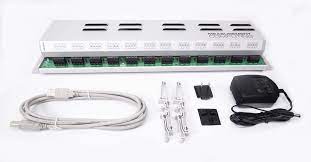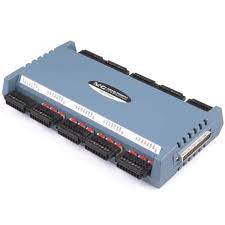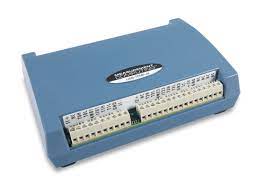- TRANSDUCERS
- TRANSDUCERS
- BASIC COMPONENTS DK
- BASIC COMPONENTS DK
- MARKETPLACE
- MARKETPLACE
- DEVELOPMENT BOARDS & KITS
- DEVELOPMENT BOARDS & KITS
- CABLE ASSEMBLIES
- CABLE ASSEMBLIES
- RF AND WIRELESS
- RF AND WIRELESS
- BOXES ENCLOSURES RACKS
- BOXES ENCLOSURES RACKS
- AUDIO PRODUCTS
- AUDIO PRODUCTS
- FANS-BLOWERS-THERMAL MANAGEMENT
- FANS-BLOWERS-THERMAL MANAGEMENT
- WIRELESS MODULES
- WIRELESS MODULES
- TERMINALS
- TERMINALS
- Cables/Wires
- Cables/Wires
- SINGLE BOARD COMPUTER
- SINGLE BOARD COMPUTER
- BREAKOUT BOARDS
- BREAKOUT BOARDS
- LED
- LED
- TEST AND MEASUREMENT
- TEST AND MEASUREMENT
- DEVELOPMENT BOARDS AND IC's
- DEVELOPMENT BOARDS AND IC's
- EMBEDDED COMPUTERS
- EMBEDDED COMPUTERS
- OPTOELECTRONICS
- OPTOELECTRONICS
- INDUSTRAL AUTOMATION AND CONTROL
- INDUSTRAL AUTOMATION AND CONTROL
- COMPUTER EQUIPMENT
- COMPUTER EQUIPMENT
- CONNECTORS & INTERCONNECTS
- CONNECTORS & INTERCONNECTS
- MAKER/DIY EDUCATIONAL
- MAKER/DIY EDUCATIONAL
- TOOLS
- TOOLS
- MOTORS/ACTUATORS/SOLEENOIDS/DRIVERS
- MOTORS/ACTUATORS/SOLEENOIDS/DRIVERS
- FPGA HARDWARE
- FPGA HARDWARE
- ROBOTICS & AUTOMATION
- ROBOTICS & AUTOMATION
The FMC-HDMI extends FMC-compatible FPGA systems with two HDMI Type A input ports. It’s extremely useful for image or video processing applications. One of the ports features a fully-fledged HDMI 1.4 receiver with CEC, HDCP, audio, and 3D TV support. The other port provides cable equalization and buffering for HDMI signals, leaving the decoding up to the user.
Which port is more appropriate to use depends on the application. The receiver port is user-friendly, hiding the complexities of the HDMI protocol. Its simple pixel bus interface spans a wide range of voltages and is easy to design in any FPGA environment. The receiver also hides the implementation details of auxiliary features, like CEC or audio embedded in the video stream. The second port provides signal conditioning only, so the HDMI protocol needs to be implemented in the FPGA. This offers video-processing flexibility at the price of complexity. Also, the TMDS I/O standard defined by the HDMI protocol requires a 3.3V VADJ, which might limit the compatibility with certain carrier cards. The EEPROM pre-programmed with a ready-to-use EDID should prove to be a good starting point. Both ports are backwards-compatible with DVI.
Connector(s):
- FMC LPC Mezzanine
- 2 x HDMI type A
- Analog Devices ADV7611 Low Power 165 MHz HDMI Receiver
- Analog Devices AD8195 1:1 HDMI/DVI Buffer with Equalization
- Adds two HDMI input ports to a compatible FMC carrier card
- HDMI receiver & buffer
- On-board EDID EEPROM
- Supports Full HD 1080p @ 60 MHz
- Auxiliary features such as CEC, Audio
- HDMI Port 1 includes a decoder which hides unneccessary complexity from the user
- HDMI Port 2 provides signal conditioning and buffering only, leaving the decoding up to the user
- Wide range of VADJ (1.8V-3.3V) supported for HDMI Port 1
- On-board pre-programmed EDID EEPROM for HDMI Port 2
FMC-HDMI: Dual HDMI Input Expansion Card
SIZE GUIDE
- Shipping in 12-14 Working Days
Description of product
The FMC-HDMI extends FMC-compatible FPGA systems with two HDMI Type A input ports. It’s extremely useful for image or video processing applications. One of the ports features a fully-fledged HDMI 1.4 receiver with CEC, HDCP, audio, and 3D TV support. The other port provides cable equalization and buffering for HDMI signals, leaving the decoding up to the user.
Which port is more appropriate to use depends on the application. The receiver port is user-friendly, hiding the complexities of the HDMI protocol. Its simple pixel bus interface spans a wide range of voltages and is easy to design in any FPGA environment. The receiver also hides the implementation details of auxiliary features, like CEC or audio embedded in the video stream. The second port provides signal conditioning only, so the HDMI protocol needs to be implemented in the FPGA. This offers video-processing flexibility at the price of complexity. Also, the TMDS I/O standard defined by the HDMI protocol requires a 3.3V VADJ, which might limit the compatibility with certain carrier cards. The EEPROM pre-programmed with a ready-to-use EDID should prove to be a good starting point. Both ports are backwards-compatible with DVI.
Connector(s):
- FMC LPC Mezzanine
- 2 x HDMI type A
- Analog Devices ADV7611 Low Power 165 MHz HDMI Receiver
- Analog Devices AD8195 1:1 HDMI/DVI Buffer with Equalization
- Adds two HDMI input ports to a compatible FMC carrier card
- HDMI receiver & buffer
- On-board EDID EEPROM
- Supports Full HD 1080p @ 60 MHz
- Auxiliary features such as CEC, Audio
- HDMI Port 1 includes a decoder which hides unneccessary complexity from the user
- HDMI Port 2 provides signal conditioning and buffering only, leaving the decoding up to the user
- Wide range of VADJ (1.8V-3.3V) supported for HDMI Port 1
- On-board pre-programmed EDID EEPROM for HDMI Port 2
NEWSLETTER
Subscribe to get Email Updates!
Thanks for subscribe.
Your response has been recorded.
INFORMATION
ACCOUNT
ADDRESS
Tenet Technetronics# 2514/U, 7th 'A' Main Road, Opp. to BBMP Swimming Pool, Hampinagar, Vijayanagar 2nd Stage.
Bangalore
Karnataka - 560104
IN
Tenet Technetronics focuses on “Simplifying Technology for Life” and has been striving to deliver the same from the day of its inception since 2007. Founded by young set of graduates with guidance from ardent professionals and academicians the company focuses on delivering high quality products to its customers at the right cost considering the support and lifelong engagement with customers. “We don’t believe in a sell and forget model “and concentrate and building relationships with customers that accelerates, enhances as well as provides excellence in their next exciting project.














